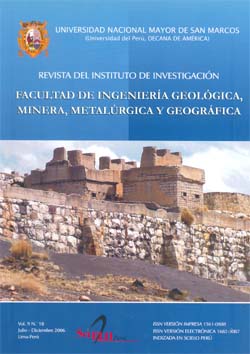Adaptation of a waste water treatment system in the urban community of Lacabamba, Ancash region-Peru, using the artificial wetlands technology
DOI:
https://doi.org/10.15381/iigeo.v9i18.2768Keywords:
Artificial wetland, Wastewater reuse, Community bio-vegetable gardenAbstract
The present investigation was a project selected in 2003 that aimed to implement and evaluate the comprehensive wastewater management system in the urban community of Lacabamba, Ancash region, by using the artificial wetland system to treat water and its reuse. in a communal bio-garden, as an innovative technology to reduce contamination of surface water sources; protect the health of the inhabitants and avoid deterioration of the environment; as well as involving the population in its 2015 Sustainable Development Plan for the Lacabamba district and actively participating in the awareness-raising and training programs of the Research project. The call was made by the Small Competitive Research Fund Program of the Secretariat for Environmental Management for Latin America and the Caribbean, SEMA / EMS and the International Development Research Center, IDRC of Canada, and focused on the sustainable use of water in the urban areas.
Downloads
Published
Issue
Section
License
Copyright (c) 2006 Daniel Lovera D., Lawrence Quipuzco U., Gaudencio Laureano V., Carolina Becerra M Becerra M., Nadezhda D. Valencia P.

This work is licensed under a Creative Commons Attribution-NonCommercial-ShareAlike 4.0 International License.
AUTHORS RETAIN THEIR RIGHTS:
a. Authors retain their trade mark rights and patent, and also on any process or procedure described in the article.
b. Authors retain their right to share, copy, distribute, perform and publicly communicate their article (eg, to place their article in an institutional repository or publish it in a book), with an acknowledgment of its initial publication in the Rev. Inst. investig. Fac. minas metal cienc. geogr.
c. Authors retain theirs right to make a subsequent publication of their work, to use the article or any part thereof (eg a compilation of his papers, lecture notes, thesis, or a book), always indicating the source of publication (the originator of the work, journal, volume, number and date).






